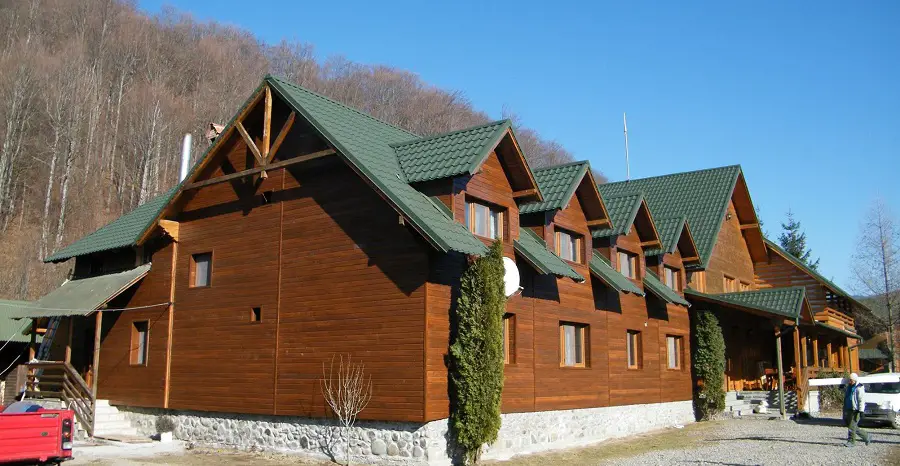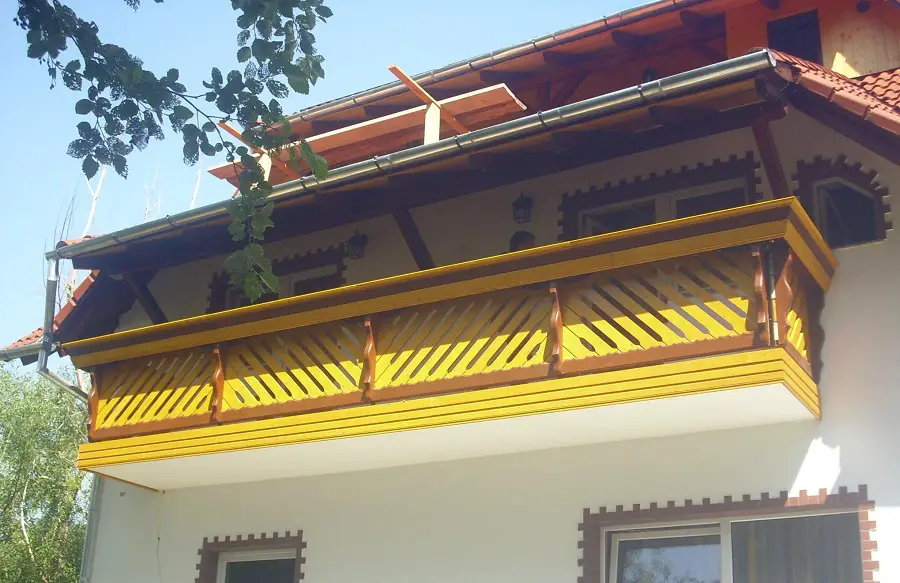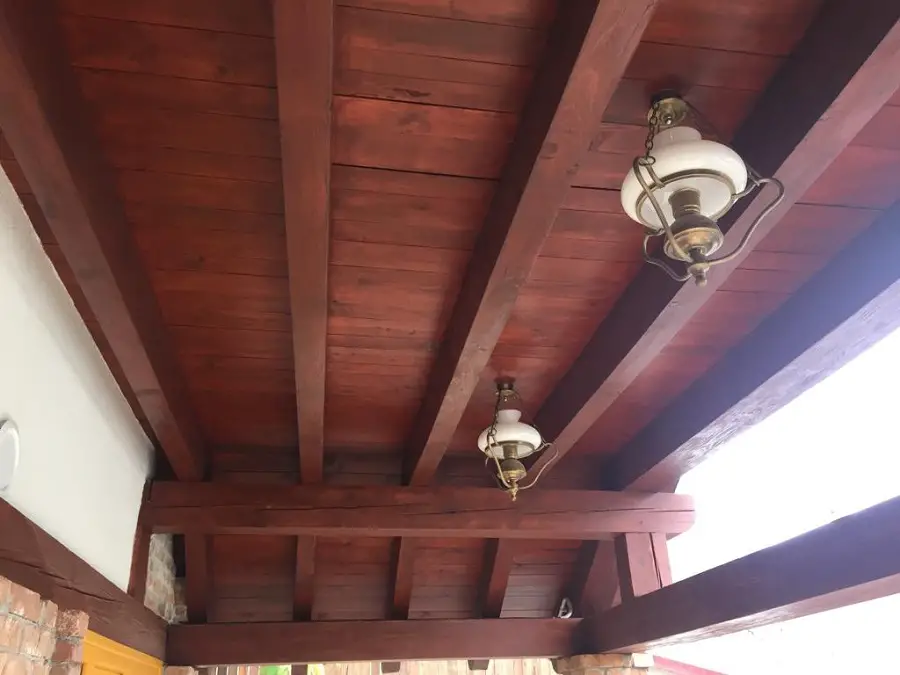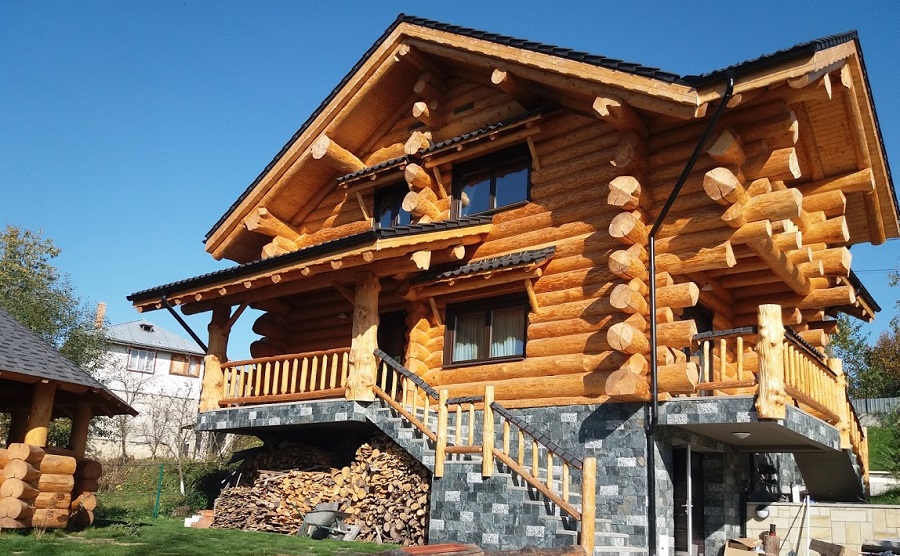Treating exterior wood with oil is an old practice, both here and in other parts of the world. Linseed oilThe combination of burnt wood and oil, common in this area, was used to protect the wood against damp, the combination of burnt wood and oil being common for village fences. The problem was - and still is for linseed oil without other additives - low resistance over time, the oil being washed away by rain in a relatively short time. But there are several types of oils and mixing them can result in much more durable finishes, even in harsh outdoor conditions. This is the case with a mixture of linseed oil and tung which is the basis not only for Danish oil, but also for other finishing products. Kreidezeit, a German company that manufactures and promotes natural products for protecting wood and house walls, has used these two oils and other natural materials to produce exterior finishing products with very good resistance over time. Kreidezezeit products are distributed in Romania by Naturalpaint.

Why the combination of the two oils is a winner
Indeed, the blend of linseed and tung oil has proven to be a good combination. The two oils have properties that complement each other, resulting in products with superior qualities.
Linseed oil has a much smaller molecule than tung oil, which allows it to penetrate deeper into the wood and protect it from the inside. Tung oil has the ability to fully polymerize in the presence of air, hardening and forming a film. Mixing them in the optimum percentage results in an oil that protects the wood much better.
The Kreidezeit oil blend also contains turpentine oil, a product used as a natural thinner. Turpentine is a natural product obtained from resin collected mainly from the pine (live tree), but also from other resinous trees. Its distillation produces turpentine oil. Boiled linseed and tung oils are viscous and need dilution to better penetrate the wood. Boiling oils is done to decrease the drying time. Unboiled oils have a very long drying time, up to a month.
Pigments as a barrier to UV radiation
The ability of oils to protect wood against moisture is self-evident. But outdoors, wood is exposed not only to water but also to the sun's rays, and simple oils, without the addition of any other product, have no ability to protect against it. Wood to which clear oil has been applied will change color over time, just like unprotected wood. This is why no product with good exterior resistance is totally colorless.
The pigments used by Kreidezeit to produce oil-based paints or pre-colored varnishes are natural, without added chemicals or other auxiliaries. They also contain no lead or other heavy metals, so there is no health risk.
We find Kreidezeit's natural pigments, in varying percentages, in the composition of pre-colored lacquers or oil-based paints, but also as separate products with which to make lacquers or paints in the most interesting colors.

Pre-coloured Kreidezeit lazings
Colored varnishes protect the wood, leaving the grain and natural grain pattern visible. Oil-based varnishes have the advantage of a natural look, the film formed is almost imperceptible. The oil allows the wood to vary in size as the outside humidity increases or decreases, an important property for a product used outdoors. With oil-based varnishes, the finish is elastic and there is no risk of cracking or peeling.
The staves are available in nine different natural colors: pine, larch, walnut, light oak, antique oak, rosewood, teak, venge and ebony. They are perfectly miscible with each other, so you can obtain a multitude of derived colors. They can be used for staining and protecting houses in bușteni, of wainscoting used for cladding houses, to protect fences, wooden garden furniture, gazebos, pergolas or terraces. They are not recommended for decks and outdoor flooring if they are subject to heavy traffic. As they are natural, they can be used to finish the wood of children's playgrounds, swings and playhouses or toys.

How to apply and...reapply
Kreidezeit pre-colored varnishes are applied directly to untreated wood. It is sufficient polishing it white, then apply two coats of lazure, drying in between. It is not recommended to apply the second coat before the first has completely dried. An interval of 24 hours between coats at a temperature of 20°C is therefore preferable. Application should be made with a brush, brush or spray gun. Consumption is between 50 and 100 g/m²/coat, depending on the method of application and the absorption capacity of the wood. Pre-colored varnishes cannot be applied on wood covered with varnish or water-based finishing products (primer, paint). The wood must be completely stripped first.
WARNING! After application, all used rags, oil residues and other auxiliary materials that have come into contact with the oil shall be placed in a basin of water. As with all oils and greases, Kreidezeit is self-igniting. The sun and the heat of summer accelerate this phenomenon, but oil-soaked scraps and rags must also be placed in water in winter.
"The 'ageing' of the finish occurs gradually over time and is recognized by the loss of the oily, silky sheen of the original finish and the appearance of a dry sheen. This is the moment that tells us that the finish needs freshening. The deterioration depends on the intensity of atmospheric factors, so it is not possible to say exactly when the refinishing should be done. Elements on the north side of the house, in unprotected areas or where atmospheric factors are violent for much of the year, may need to be refreshed after 2-4 years. On the south side of the house, in milder climates or in more sheltered areas, refreshing can be done after 4-6 years. Simply wash the surfaces for degreasing beforehand and apply a new coat of varnish.
Kreidezeit products are appreciated by the professionals who use them to finish log houses, exterior wainscoting, windows or terraces. They appreciate the ease with which they are applied and reapplied, the easy maintenance and the natural look. And the fact that they are natural products is a plus not to be overlooked.





































Add comment